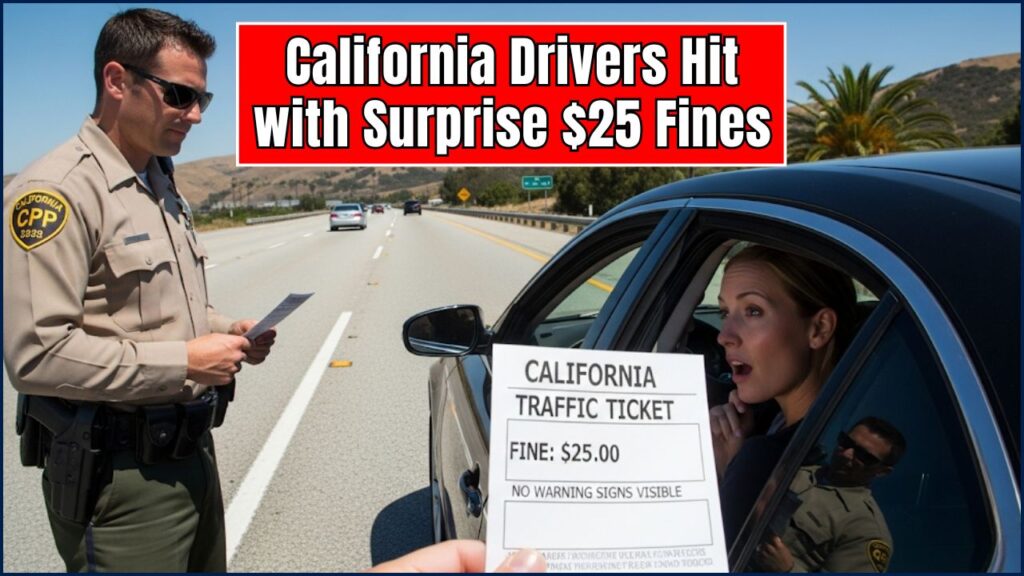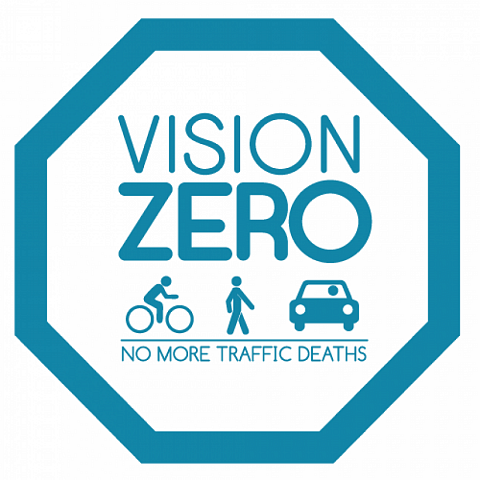California drivers have a new challenge on their hands: the Daylighting Law. This law, in effect since January 2025, prohibits parking within 20 feet of any crosswalk—regardless of whether you can see a sign or a painted curb. While this might seem like a minor issue, it’s already causing some major headaches for unsuspecting drivers. Many are facing surprise fines of up to $108, all for simply parking near a crosswalk, even when there were no visible markings to indicate a restriction.

In this article, we break down everything you need to know about the Daylighting Law, from its purpose to practical advice on how to avoid fines. Let’s dive into this new regulation, its history, and why it’s essential for both pedestrian and driver safety.
California Drivers Hit with Surprise $25 Fines
| Key Fact | Details |
|---|---|
| Law Name | Daylighting Law |
| Enforcement Start Date | January 2025 |
| Fine Amounts | Fines range from $25 to $108 depending on the city |
| Key Cities Affected | San Francisco, Sacramento, San Diego, Berkeley |
| Enforcement Status | Fines are being issued in several cities; grace periods have ended in places like San Diego. |
| Grace Periods | San Diego had a 60-day warning period (ends March 1, 2025). |
| Appeal Process | You can appeal fines if you believe the ticket was issued unfairly (e.g., lack of signage or curb paint). |
| Official Resources | For more details, visit the California Courts Self-Help Guide. |
California’s Daylighting Law is an essential step toward making streets safer for pedestrians. By understanding its details and staying informed about local rules, you can avoid surprise fines and contribute to road safety. If you do get ticketed, don’t worry—you can contest the fine and take steps to avoid it in the future.
What is the Daylighting Law?
The Daylighting Law is part of a California State initiative to enhance pedestrian safety at intersections. This law specifically prohibits parking within 20 feet of any crosswalk, which improves visibility for both pedestrians and drivers. Reduced visibility can contribute to pedestrian accidents, so the law helps ensure that drivers have a clear line of sight when turning or entering an intersection.
Why is this Important?
In California, approximately 2,000 pedestrians die annually due to accidents on the road, many of which occur at intersections. One of the significant causes of these accidents is obstructed visibility, where parked vehicles block the view of both pedestrians and drivers. By enforcing this no-parking zone around crosswalks, California hopes to reduce accidents and fatalities by improving the visibility at key intersections.
Historical Context
California has long been a leader in adopting traffic safety laws aimed at pedestrian protection. The Daylighting Law is part of a broader trend where laws continue to evolve to address the increasing number of pedestrians on the road. The Vision Zero Initiative, for example, aims to eliminate all traffic-related deaths by 2035.

How Much Will the Fines Be?
You might think $25 isn’t much for a parking violation, but the fines in some cities can be much higher. Here’s a breakdown of the fines in key cities:
| City | Fine for Violation |
|---|---|
| Sacramento | $25 |
| San Diego | $65 + $12.50 admin fee |
| San Francisco | $108 |
| Berkeley | $68 (up to $96 on game days) |
In San Diego, the fine could reach up to $77.50 with administrative fees. In San Francisco, the fine is particularly steep at $108. This significant variation from city to city can catch drivers off guard if they’re unaware of the local rules.
Real-Life Examples
Let’s take a look at some real-life stories of drivers who were caught by surprise.
Case 1: Samantha from San Francisco
Samantha, a San Francisco resident, got a $108 fine for parking within 20 feet of a crosswalk in her neighborhood. She had parked there for years without any issues, but the city had recently enacted the Daylighting Law. Samantha didn’t notice any signs or red paint on the curb, and so she was blindsided by the ticket.
However, after appealing the fine by providing photos showing the lack of visible markings, she was able to get her fine reduced.
Case 2: Michael from San Diego
Michael lives in San Diego, where fines can reach as high as $77.50. He received a ticket after parking in front of a crosswalk that didn’t have any signs or curb markings. In his case, he didn’t know about the new law and thought he was in the clear because the crosswalk didn’t have red-painted curbs.
After receiving his ticket, Michael went on to contest it. He documented the absence of signage and won his case.
Pedestrian Safety and the Bigger Picture
Pedestrian accidents are a growing concern in the U.S., especially in busy cities. For context, pedestrian fatalities have increased by 45% over the past decade, with intersections being a hotspot for such accidents. By enforcing the Daylighting Law, California aims to reduce this figure by making roads safer for pedestrians, cyclists, and drivers.
Moreover, this law may have indirect benefits, such as encouraging public transportation and walking. As streets become more pedestrian-friendly, they may encourage more people to walk or use bikes, reducing traffic congestion and ultimately benefiting the environment.
What to Do If You Get a Ticket
If you receive a fine under the Daylighting Law, here are your options:
- Review the Details: Ensure the ticket includes the correct details, such as the exact location and time of the violation.
- Gather Evidence: If you think the ticket was issued in error, take photos of the area—particularly if there were no signs or curb markings.
- Appeal the Ticket: Follow the instructions on the ticket for filing an appeal. You’ll usually have a limited time to submit your case.
- Consult a Traffic Attorney: If your case is more complex or if you’re unsure how to proceed, consider seeking professional legal advice.
Parking Regulations: Old Rules vs. New Realities
Here’s a breakdown of how California’s parking rules, especially around crosswalks, have shifted:
| Feature | Before 2025 (Common Understanding) | Starting 2025 (Daylighting Law) |
| Crosswalk Parking | Generally avoided if marked; red curbs meant no parking. | Illegal within 20 feet of any crosswalk (marked or unmarked). |
| Curb Extensions | Less specific regulation. | Illegal within 15 feet of a crosswalk with a curb extension/bulb-out. |
| Warning Signs | Often expected for new restrictions. | Fines can be issued without explicit warning signs. |
| Enforcement Focus | Varied by locality and specific violations. | Increased emphasis on pedestrian visibility and safety, with rigorous enforcement expected. |
Tips to Avoid Getting a Ticket
To avoid fines, here are some practical tips:
- Check for Curb Paint and Signs: Always look for red-painted curbs or no parking signs near crosswalks. But remember, lack of markings doesn’t mean you’re in the clear.
- Park Further Away: When in doubt, park further from the crosswalk to ensure you’re not within that 20-foot zone.
- Use Parking Apps: Some cities have apps that display real-time parking restrictions, helping you stay on top of the rules.
- Stay Updated: Local regulations can change frequently. Make sure you’re familiar with parking rules in the area where you drive the most.
Legal Advice Section: Understanding Your Rights
It’s important to understand your rights if you receive a fine. The law is on your side if there are no visible signs or markings. Consult with traffic experts or attorneys for guidance. In some cases, you may be able to fight the ticket in court or avoid paying if there’s sufficient evidence that the law was not properly communicated to you.
FAQs
Q: Can I park in front of a crosswalk without getting fined?
No. Under the Daylighting Law, you cannot park within 20 feet of any crosswalk, even without visible signs or markings.
Q: How do I know if a crosswalk is in a restricted zone?
Look for red-painted curbs or no-parking signs. If none are present, it’s safest to park further than 20 feet away from the crosswalk.
Q: What happens if I don’t pay my fine?
If you fail to pay the fine, additional fees can be imposed, and you may even face a hold on your vehicle registration. It’s important to deal with the fine promptly.












